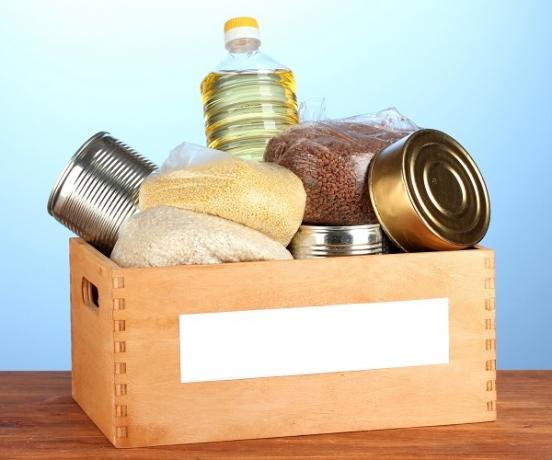Non-perishable (or stable) foods are those that have longer shelf life and duration in relation to other foods.
A non-perishable food is food that, if it has a low water content and is correctly stored, can be in good condition for consumption longer.
What are non-perishable foods?
The list of so-called non-perishable foods is long. The foods that last longer are the driest, that is, they have little water in its constitution. Many industrialized foods are also non-perishable.
See some examples of these foods:
- salt,
- coffee,
- sugar,
- Water,
- noodle,
- popcorn,
- flour,
- powdered milk,
- cookies,
- vinegar,
- rice,
- bean,
- Lentil,
- chickpea,
- chocolate powder,
- dry seasonings,
- powdered egg,
- oil,
- honey.
Foods that are preserved in the form dehydrated (such as dehydrated fruits) or in conserve (like sausages and olives) are also non-perishable and last longer.
Likewise, perishable foods that are frozen also have an extended shelf life.

Non-perishable foods are usually drier, with little water and industrialized.
Advantages of non-perishable foods
In addition to having a longer consumption period, non-perishable foods have other advantages compared to other types of food.
A good part of the non-perishable products are foods of great importance for human nutrition and for the balance of meals, such as rice, grains and pasta.
In addition, still in relation to the advantage of shelf life, non-perishables are the most suitable foods for long storage, which can be consumed in emergency situations.
A good example of this is the use of these products in the event of food shortages, such as in the event of an environmental disaster or war.
Do non-perishable foods spoil?
It is important to know that the so-called non-perishable foods also expire and can spoil, no longer suitable for consumption.
The difference between non-perishable and perishable foods is that if they are stored properly correct, non-perishables maintain their quality for consumption longer compared to perishable.
Non-perishable food and donation
It is very common that, in food collection campaigns, the donated items are requested to be non-perishable food items.
It is precisely because of the quality of extended shelf life that these are the foods collected, because they are not quickly lost and can be easily stored until it is time to be distributed and consumed.
How are non-perishable foods preserved?
When talking about non-perishable food, it refers to the shelf life it has, especially if it is stored in a place that is dry and without humidity. Food should also not be stored in places where it will be exposed to heat or sunlight.
Most non-perishable foods also do not need to be stored in a refrigerator or freezer.
Perishable food
Unlike non-perishables, perishable (or alterable) foods are those that spoil more easily and which have a shorter shelf life. This is because they have more water in their constitution.
In order to preserve these foods, they must be kept in a dry and cool environment, protected from sunlight or refrigerated.
Natural foods like some fruits, vegetables, meat, fish and milk fall into this category.
See the meaning of fruits.
Semi-perishable food
Semi-perishable foods, as with perishables, are less dry and have a shorter duration, if compared to non-perishable foods.
The difference between semi-perishables and perishables is the "barrier of protection" that semi-perishables have. The best example of this are unpeeled foods such as potatoes, beets and eggs.
The preservation of semi-perishable foods is closely related to the preservation of the shell, which has the function of protecting the food from damage that can be caused by exposure to the sun or moisture and that can, for example, lead to the growth of fungi.
Also part of the category of semi-perishable foods are those that have gone through some type of process that increases their shelf life, such as foods that are stored in canned form.
Meet some differences between vegetables and legumes and also see the meanings of Transgenic foods and Diet.
